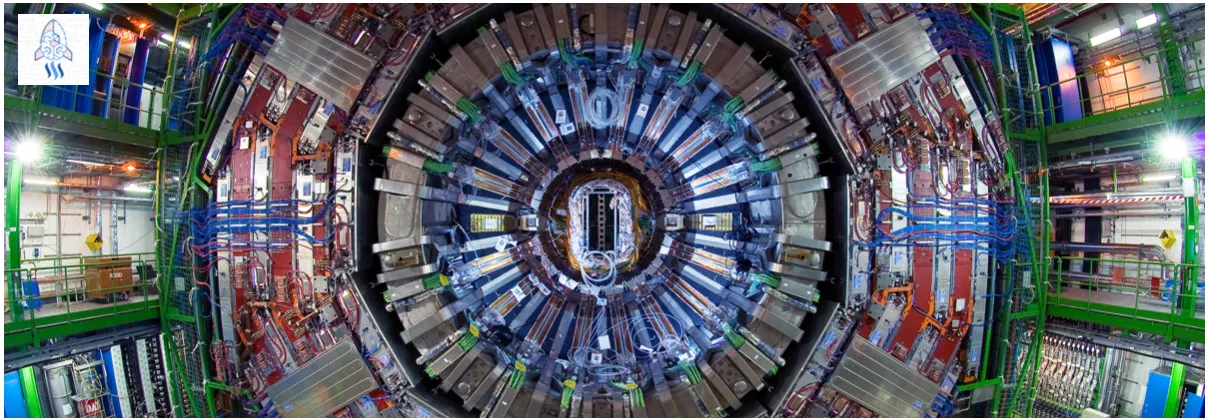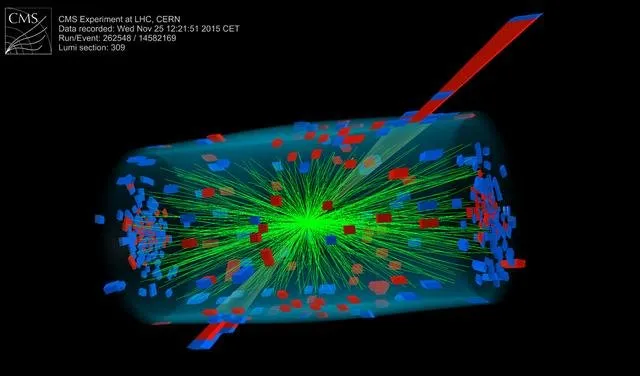I was planning to release a lot of material before the steemstem meetup at CERN, and I only partially managed to do so at the end of the day. I have however decided to finish this series no matter what, even if we are all today back from CERN for more than a week. In this way. I will be 100% ready for episode 2, if we organize an episode 2 of course.

In the former post of this series, I introduced four different classes of objects when one was considering the detector standpoint: stable particles, unstable particles, jets and invisible stuff.
In order to be sensitive to all of these, a typical detector located at a particle collider features an onion-like structure. Like onions , they are organized into layers, and each layer has a different role. Okay, I admit, this is where the comparison with onions breaks down, as any single layer of an onion in principle tastes the same.
Joke asides, this is the topic that I will give details about today. However, I will stay very general. I am a theorist and not an experimentalist, and since we have one particle physics experimentalist here on steemit, I leave her this task :)
TYPES OF OBJECTS THAT CAN BE DETECTED
Before moving further, it is useful to provide a short reminder about the objects that can be observed in a detector like one of those around the Large Hadron Collider.

[image credits: CERN]
First, there is a bunch of stable objects, on detector time-scales, that could be detected as such. Strictly speaking, those guys could be unstable, but they must then decay outside the detector.
There are three classes of such stable particles: electrons, photons and muons. They can thus be directly observed.
Secondly, we have particles that are unstable, and short-lived enough so that they will decay within the detector. I think here about weak bosons, Higgs bosons or top quarks, for instance, or most new physics particles that are searched for.
These particles will decay promptly into other stuff called daughter particles, and these daughter particles will either be the stable guys, or will further decay. We will however be able to go back to the initial particle (the mother particle) from the properties of the daughters.
Our detectors are built in such a way that they are precise enough to accomplish this task.
The third class of particles of interest consists of jets of strongly interacting particles. All quarks but the top quarks, as well as the gluon will radiate each other, a high energies. This will form a shower of particles which when taken together make a jet of composite states named hadrons.
Those hadrons are composite objects made of quarks, by virtue of the theory of the strong interactions. Quarks can indeed not be observed freely in nature.
And finally, there exist a last class of particles that are the invisibles. This includes of course the neutrinos of the Standard Model, but also any particle that could play the role of dark matter.
Thanks to energy and momentum conservation, the invisible can be seen as missing energy and momentum in the detector. This indirect derivation stems from the initial state the is more or less perfectly known.
TRACKING AND CALORIMETRY

[image credits: CMS]
The above picture is an onion. The CMS detector onion. But ATLAS works the same. And many other detectors.The magenta circles emphasize the onion-like structure of the detector.
The collision here occurs perpendicularly to the shown slice of the detector. In other words, the screen on which this post is read is within the plane perpendicular to the collision axis. In the middle of the CMS picture lies our collision point.
Right around the collision point lies a subdetector called a tracker. The goal here is to reconstruct the tracks of all charged particles. This is achieved by relying on the fact that a charged particle ionizes a medium when it travels through it. And from the products of ionanization, we can go back to the what happened.
Thanks to tracks, we can reconstruct the charge and the momentum of the particles that induced the tracks.
Now, let us move away from the tracker and focus on the ECAL and HCAL modules of the figure.
Around the tracker stand the electromagnetic and the hadronic calorimeters. Their role consists of stopping the particles that go through them, so that their energy could be measured. The electromagnetic calorimeter (ECAL) is dedicated to electrons and photons whilst the hadronic calorimeter (HCAL) is dedicated to jets.
Around the calorimeters lies a magnet that will.. surprize surprize… generate a magnetic field. This magnetic field is necessary to bend the trajectories of the particles. This faeture is crucial for the identification of all particles and the measurement of their properties, as the amplitude of the bending carries a lot of information.
Finally, the only (detectable) particles managing to pass both calorimeters almost intact are the muons. Therefore, dedicated muonic systems are installed to detect them and measure their properties. The M in CMS stands for muons. CMS is indeed really good at measuring the properties of the muons. ;)
TAKING A PICTURE WITH ALL SUB-DETECTORS ALL TOGETHER
By putting the information extracted from the tracker, the two calorimeters and the muon systems, one is able to reconstruct what happened in a collision.
For instance, an electron leaves tracks in the tracker and energy deposits in the electromagnetic calorimeter, whereas a photon will only yield deposits in the latter. Hadrons leave an imprint in the tracker if they are charged, and in the hadronic calorimeter in all cases. And so on.
At the end of the day, we know exactly what happened and we are thus armed to investigate whether we have to deal with some (boring) Standard Model stuff or some new phenomenon, like dark matter.
There is no way to know exactly which one of the potential processes leading to a given final state occurred. This is where statistics comes into the game. After billions of collisions, we can start to be picky about the type of electrons we are interested in, how they must be separated from each other, how the photons should be energetic, etc.
This level of pickiness will allow to select a lot of signal collisions (what we are interested in) and hopefully kill as much background as possible (what we do not care about but yields the same imprint in the detector).
This is the game of designing a great new physics analysis :)
SUMMARY
In this post, I tried to give basic details how general-purpose detectors around collider experiments are made. Starting from the outside, a general-purpose detector consists in several layers respectively dedicated to the measurement of the properties of the muons, to measure the energy of jets, photons and electrons. Finally, the most inner element of a detector aims to reconstruct the tracks of all charged particles that have been created in a collision.
Those detectors are cutting-edge technology designed with a given purpose: reconstructing those collision events in a sufficiently good enough way, so that they could be used to unravel some interesting new phenomena and revolutionize our vision of the world of the elementary particles.
SteemSTEM
SteemSTEM is a community-driven project that now runs on Steemit for more than a year. We seek to build a community of science lovers on Steemit and to promote well written/informative Science Technology Engineering and Mathematics (STEM) postings in order to make Steemit a place for fascinating STEM content.
More information can be found on the @steemstem blog and on the Steemit chat and in our last project report.
